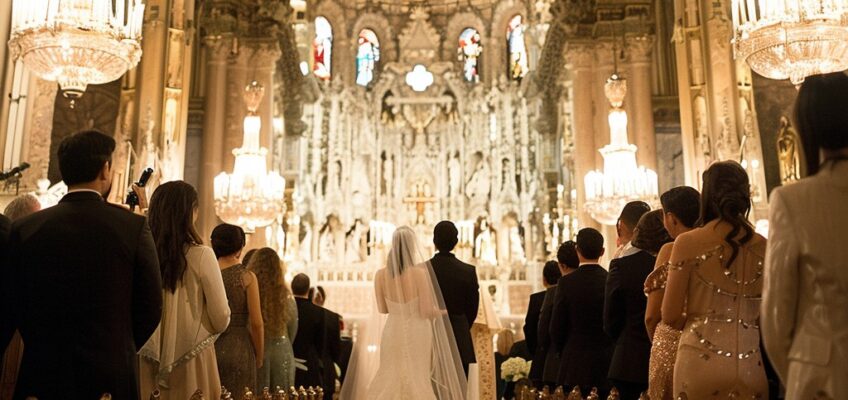In a world where trends come and go, the allure of traditional formal weddings remains steadfast, a testament to the enduring power of rituals and customs that have withstood the test of time. These ceremonies, steeped in cultural heritage and rich symbolism, offer a captivating blend of elegance, timelessness, and profound meaning.
Traditionally, formal weddings have been woven into the fabric of societies for centuries, each culture imbuing them with its unique customs and symbolism. The significance of these traditions lies not only in their aesthetic beauty but also in their ability to connect us to our roots, honoring the legacies of our ancestors and preserving the rich tapestry of cultural heritage. Each element, from the intricate attire to the symbolic rituals, carries profound meaning, evoking a sense of reverence and awe.
A Traditional Formal Wedding
A traditional formal wedding is an event, where every detail is carefully crafted to create an atmosphere of grandeur and solemnity. Here are some of the key elements that define these ceremonies:
- Venue: Stately churches, grand ballrooms, or historic mansions often serve as the backdrop for traditional formal weddings, lending an air of timeless elegance and grandeur.
- Attire: Exquisite bridal gowns, tailored suits, and formal attire adorn the wedding party, reflecting the sophistication and formality of the occasion.
- Processional: The ceremonial procession, often accompanied by classical music or traditional instruments, sets the tone for the solemn occasion.
- Rituals: From the exchange of vows and rings to the lighting of the unity candle, traditional rituals imbue the ceremony with deep symbolic meaning.
- Officiant: A respected religious or civil authority presides over the ceremony, guiding the couple through the sacred rites and traditions.
Choosing the Right Venue for a Traditional Formal Wedding
The venue plays a pivotal role in setting the stage for a traditional formal wedding. When selecting the perfect location.
- Architectural Grandeur: Opt for venues with stunning architectural features, such as soaring ceilings, ornate detailing, and historical significance, to create an atmosphere of timeless elegance.
- Capacity: Ensure the venue can accommodate your guests comfortably while maintaining an intimate and formal ambiance.
- Amenities: Explore venues that offer dedicated bridal suites, separate spaces for the ceremony and reception, and on-site catering facilities to streamline the event planning process.
- Accessibility: Consider the convenience of the venue for your guests, including proximity to transportation and accommodations.
Attire for Traditional Formal Wedding
The attire worn by the couple and their wedding party plays a pivotal role in setting the tone for a traditional formal wedding.
- Bridal Gown: Classic silhouettes, such as ball gowns or A-line gown, crafted from luxurious fabrics like satin or lace, create a regal and romantic look. Opt for delicate embellishments, like beading or embroidery, for a touch of understated glamor.
- Groom’s Attire: A well-tailored tuxedo or formal suit, paired with a crisp dress shirt, a sophisticated tie or bow tie, and polished dress shoes, exudes a sense of refinement and sophistication.
- Bridesmaids’ Dresses: Elegant floor-length gowns in rich hues or classic neutrals, complemented by tasteful accessories, create a cohesive and formal look for the bridal party.
- Groomsmen’s Attire: Matching suits or tuxedos, paired with coordinating ties or pocket squares, lend a polished and cohesive appearance to the groom’s attendants.
From the grand cathedrals of Europe to the vibrant temples of Asia, formal wedding ceremonies have served as a sacred union, binding two souls and two families together in a celebration of love and commitment.


Leave a Reply